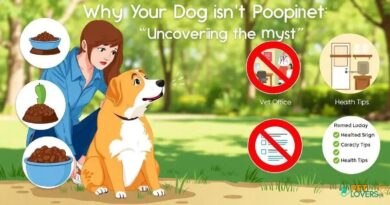What is: Yeast infection treatment methods
Understanding Yeast Infections in Dogs
Yeast infections are a common issue in dogs, often caused by an overgrowth of the yeast species Malassezia. This condition can affect various parts of a dog’s body, including the ears, skin, and paws. Recognizing the symptoms early is crucial for effective treatment. Common signs include itching, redness, and a foul odor, which can significantly impact your dog’s quality of life. Understanding the underlying causes of yeast infections is essential for preventing recurrence and ensuring your pet’s health.
Identifying Symptoms of Yeast Infections
Symptoms of yeast infections in dogs can vary depending on the affected area. In the ears, you may notice excessive scratching, head shaking, or a dark discharge. Skin infections often present as red, inflamed patches that may be flaky or oily. Dogs may also exhibit signs of discomfort, such as licking or biting at their skin. Recognizing these symptoms promptly can help you seek appropriate treatment and alleviate your dog’s discomfort.
Common Treatment Methods for Yeast Infections
Treatment for yeast infections typically involves a combination of topical and oral medications. Antifungal shampoos and creams are commonly prescribed to target the infection directly on the skin or in the ears. In more severe cases, oral antifungal medications may be necessary to eliminate the yeast from the dog’s system. It’s essential to follow your veterinarian’s recommendations closely to ensure the infection is fully resolved.
Home Remedies for Yeast Infections
Some pet owners explore home remedies for treating yeast infections in dogs. Natural options include apple cider vinegar, which can help restore the skin’s pH balance and inhibit yeast growth. Diluted solutions can be applied topically or added to your dog’s bath. However, it’s crucial to consult your veterinarian before trying any home remedies, as they may not be suitable for all dogs and could potentially worsen the condition.
Preventing Yeast Infections in Dogs
Preventing yeast infections involves maintaining proper hygiene and addressing any underlying health issues. Regular grooming and bathing can help keep your dog’s skin clean and reduce moisture buildup, which yeast thrives on. Additionally, a balanced diet that supports your dog’s immune system can play a significant role in preventing infections. Be mindful of any allergies or sensitivities that may contribute to skin problems.
When to Consult a Veterinarian
If you suspect your dog has a yeast infection, it’s essential to consult a veterinarian for an accurate diagnosis and appropriate treatment plan. Delaying treatment can lead to more severe infections and complications. Your vet will perform a thorough examination and may conduct tests to confirm the presence of yeast. Early intervention is key to ensuring your dog’s swift recovery and comfort.
Understanding the Role of Diet in Yeast Infections
The diet can significantly impact a dog’s susceptibility to yeast infections. High-sugar diets can promote yeast overgrowth, so it’s vital to feed your dog a balanced, low-sugar diet. Some veterinarians recommend grain-free diets, as grains can contribute to yeast proliferation in sensitive dogs. Always consult your veterinarian before making significant changes to your dog’s diet to ensure it meets their nutritional needs.
Long-term Management of Yeast Infections
For dogs prone to recurrent yeast infections, long-term management strategies may be necessary. This can include regular veterinary check-ups, ongoing antifungal treatments, and lifestyle adjustments. Keeping your dog’s environment clean and dry is crucial, as yeast thrives in warm, moist conditions. Regularly monitoring your dog’s skin and ears can help catch any signs of infection early, allowing for prompt treatment.
Understanding the Importance of Follow-up Care
After initial treatment for a yeast infection, follow-up care is vital to ensure the infection has been fully resolved. Your veterinarian may recommend re-checks to monitor your dog’s progress and adjust treatment as necessary. Consistent follow-up can help prevent future infections and ensure your dog remains healthy and comfortable.


